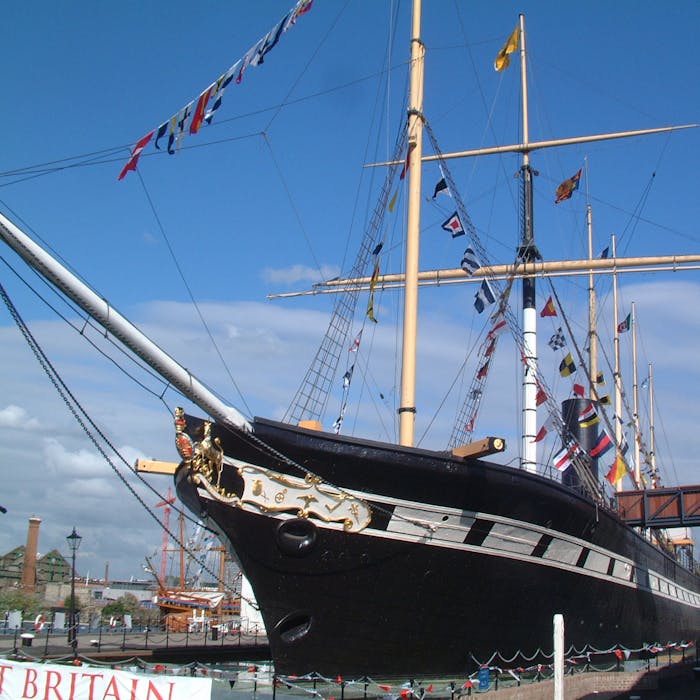
SS Great Britain - historic ship in Bristol
When she was launched in 1843 the ss Great Britain was the largest ship in the world and the first screw-propelled, ocean-going, wrought iron ship. Restored and refitted, the ship is now a major visitor attraction in Bristol.
Designed by Isambard Kingdom Brunel for the transatlantic service between Bristol and New York, the SS Great Britain was billed as ‘the ship that changed the world’. The longest ship on the planet between 1845 to 1854, it was the world’s first great ocean liner.
While other ships had been built of iron or equipped with a screw propeller, Great Britain was the first to combine these features in a large ocean-going ship. She was the first iron steamer to cross the Atlantic Ocean, which she did in 1845, in 14 days.
The ship carried 130 crew and around 300 first and second class passengers, who were provided with cabins, and dining and promenade saloons.
Though cutting edge, the SS Great Britain proved a financial disaster for her owners, mostly due to her long and costly construction, and then ongoing design flaws. The maiden voyage on 26 July 1845 was five years overdue. Various adaptations and changes had to be made to the structure over the next few voyages, as design flaws became apparent.
Finally, two years into service, the ship was run aground off Ireland by its captain (possibly due to out-of-date charts), and the unlucky vessel was left there for nearly a year, before being refloated and taken back to Liverpool.
This exhausted the funds of the owners of the ship, and it was sold off or a relative pittance.
After this she was converted to a clipper taking emigrants to Australia, before serving as a troop ship in both the Crimean War and the Indian Mutiny. She then became a cargo ship and, finally, a coal store in the Falkland Islands where she was scuttled in 1937.
Today the SS Great Britain sits proudly beside Bristol's Dockyard Museum, beautifully restored after being rescued from ignominy, scuttled half a world away in the Falkland Islands. She is now listed as part of the National Historic Fleet and hosts close to 200,000 visitors a year.
Links to external websites are not maintained by Bite Sized Britain. They are provided to give users access to additional information. Bite Sized Britain is not responsible for the content of these external websites.
